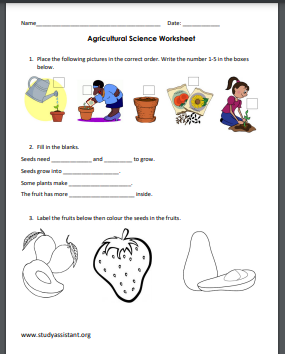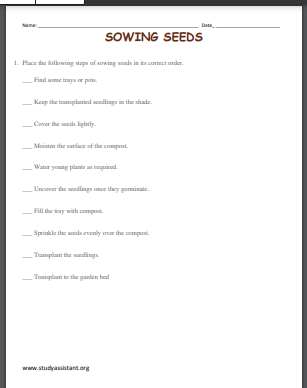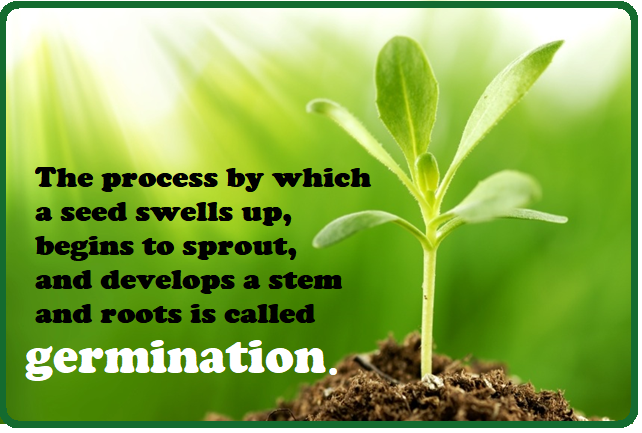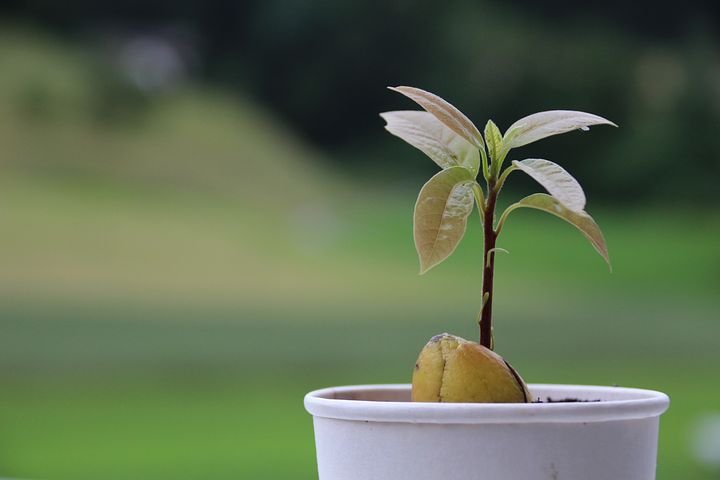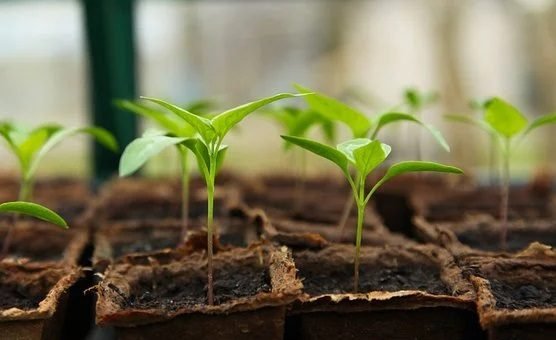Summary
A Seed is a baby plant.
The softest breeze can carry a seed and where it falls, in just the right place, a new life can begin. Trees and vegetation begin as seeds. Wind, water, and animals move seeds around. A seed that gets enough water and sunlight will sprout. Soon, a seedling will come up from the ground.
Different kinds of plants have different kinds of seeds. Some seeds are big, example a coconut, others are small, example wheat, yet some are flat, example pumpkin. All seeds contain stored food and are waiting to grow.
Plant your own seed
With the right light and some simple equipment you can begin planting seeds in your garden. Many people like to grow plants. Plants are grown for food, medicine, and even cosmetics. It can also be a relaxing activity. Growing plants from seeds could be extremely satisfying and rewarding as it is quite easy to do.

The following are some plants that are easy for a beginner to grow:

- tomatoes
- marigolds
- basil
- lettuce
- bell pepper
- cabbage
- garlic
- ginger
- squash
- zucchini
Choose a container with drainage holes. It can be plastic pots, cell packs, peat pots, plastic flats, yogurt cups, even eggshells. Just make sure it has enough space for all the seedlings.
Use quality soil. Prepare the container for planting by mixing manure and topsoil. Once you place it in the container, wet the soil with water before you add the seeds.
Place seeds or seedlings into the container. Cover seeds with soil equal to three times their thickness. However, you should read the seed packet planting instructions carefully as some seeds, such as lettuces, need light to germinate and should be place on the soil surface.
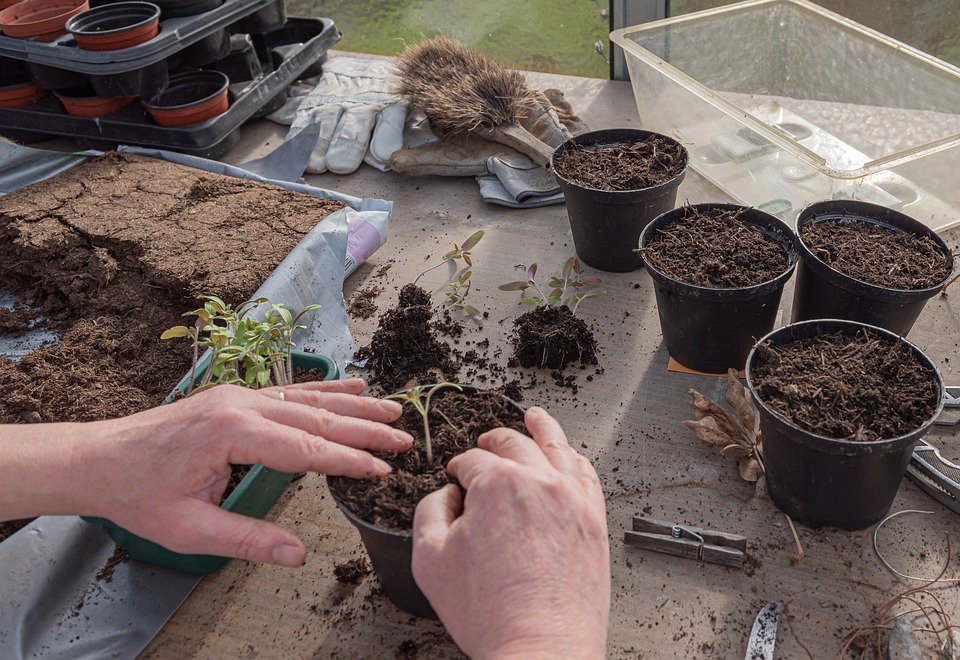
Then use a spray bottle to water the soil after planting again. Keep the soil moist, but do not overwater as it could kill the seedlings.
Once the the seed starts sprouting, do not splash water on the leaves. Just keep the soil warm and moist.
Fertilize your plant after the second set of true leaves. The strength of the fertilizer should be half strength. After four weeks, apply full strength every other week until it is transplant.
Give the seedlings enough light, a seedling need 14-16 hours of direct light for healthy growth. If it is bending that is a sure sign it is not getting enough light. Thus you may have to use artificial light. “Harden off” seedling to get it use to the harsher surroundings, before transplanting.
They are easy, but you must take a little bit of care while sowing. You must provide the required germination: warmth, moisture and oxygen for the plants. Growing plants from seeds is much cheaper than buying the plants.
Video on the Needs of a Plant
Video showing the growth of a bean to a plant
Activity – Seedling Growth Diary
Plant a seed and record changes of its daily growth in a diary. Use metric units.
Here are two videoes to help you get started:
Read the poem and complete the various activities: The Little Plant
Gardening Tools

Whether you are growing for food, or medicine, or enjoyment, you will need some tools. The most common tools are a wheelbarrow, a spade, garden fork, rake or other long handled tool. Use the tools rather than your hands. You may get injured with sharp objects and debris buried in the soil.
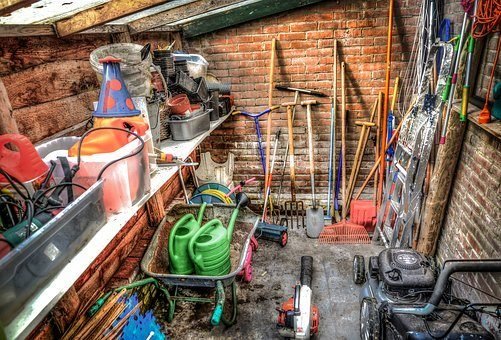
When you finish using any gardening tool, return them to the shed or place them in a place out of people way.
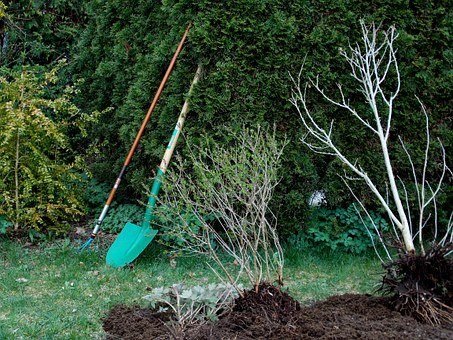
Note, you should be careful when carrying gardening tools around. Larger tools should be dragged.
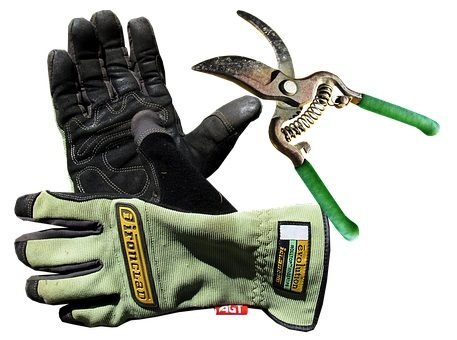
fertilizers, pesticides, bacteria and fungus that live in the soil.
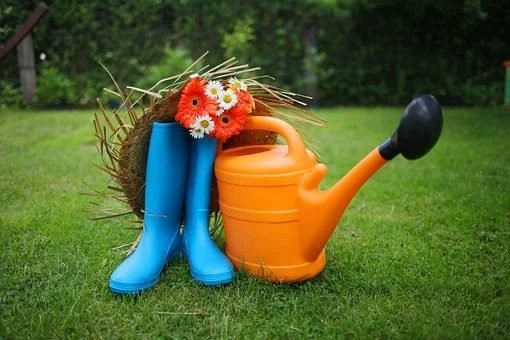
Proper gear are safety goggles, sturdy shoes, long pants, long sleeve shirt, hat and even sunscreen.

The operator will have to protect his ears and eyes from the noise and flying objects.
All sharp tools should be kept away from children. When electrical tools are not in use, unplug the tools.
Now that you are family with the usefulness of gardening tools you can now move on to caring for plants.
Caring for Plants
Once you place your plants in a safe location, it will need sunlight and the right amount of water to grow healthy. You should not over-water your plants, as it can rot. Too little water causes the plants to wither (or dry up) and die. Also, keep the plants free from pest and add fertilizer when needed. Make sure the soil has enough nutrients for the plant.
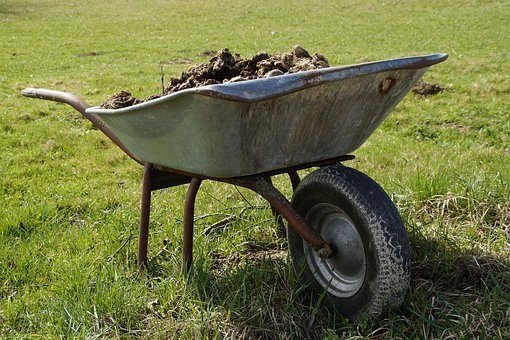

Link to poem and worksheets for “The Little Plant” Young children will enjoy dramatizing this poem.
Worksheet
Click on the links below to download the PDF worksheets.
Agricultural Science Worksheet 1
